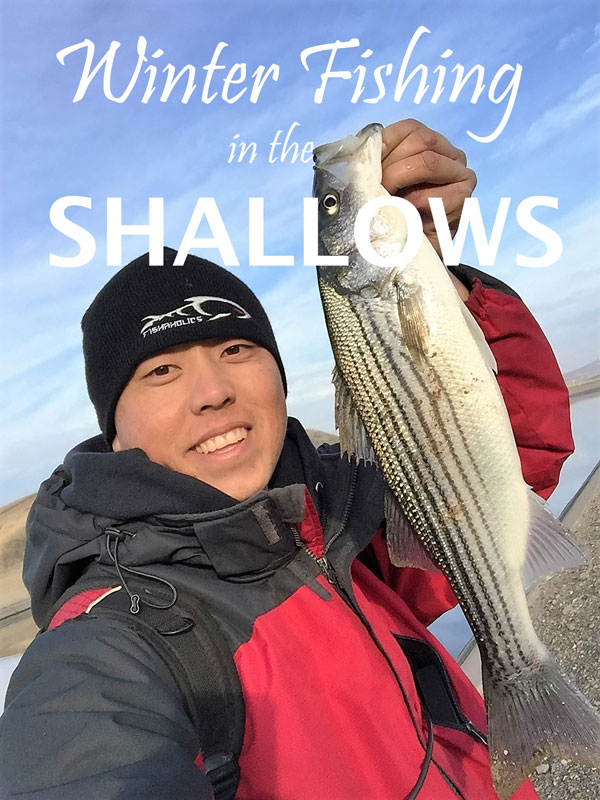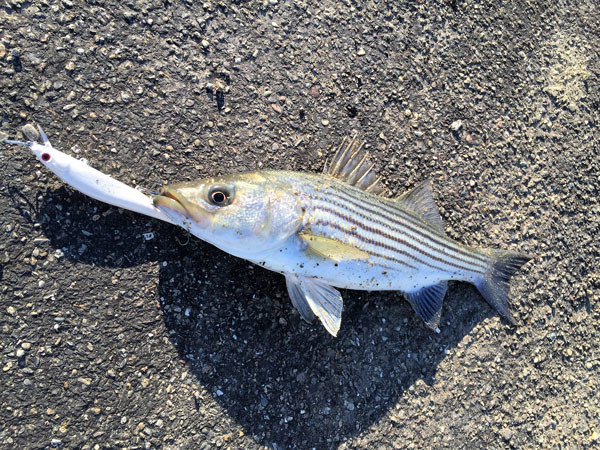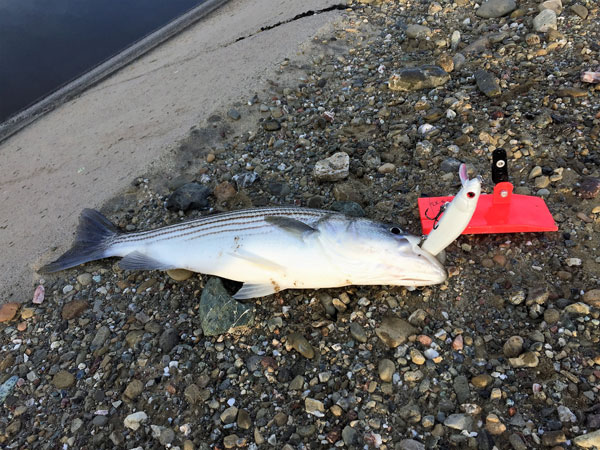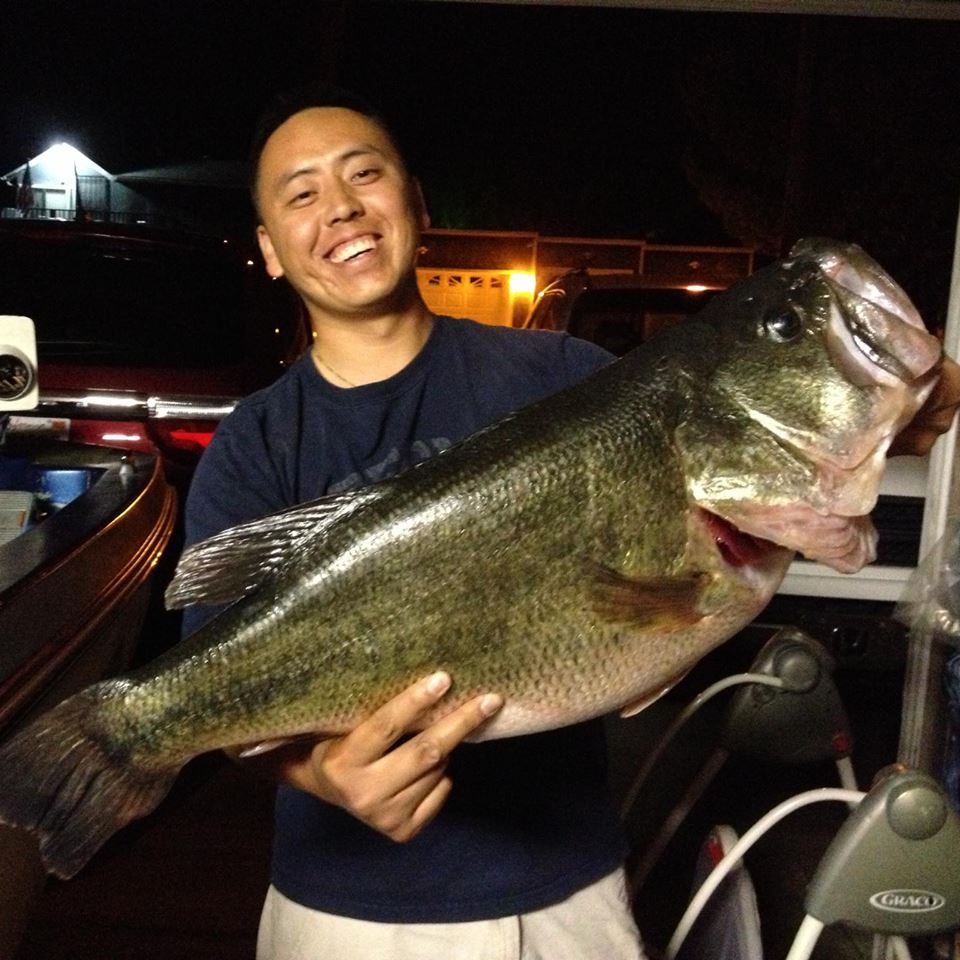
Winter Fishing In The Shallows
Here’s a pattern that might work for you.
So in the winter time, most fish will relate to the bottom or suspend at a certain depth. These fish are less active and not hunting. So it’s tougher to get them to bite. So why not target only the hungry ones.
It’s the heart of winter. Which can intimidate anglers but its not about how cold or hot it is, it’s about how stable the weather has been for the past few days. With stable weather, patterns start to emerge. The temperature hadn’t fluctuated much over the past few days so I decided to head out over the weekend.
There are bridges all along the California aqueduct. Most of the time, I’ll cast lures there just to test out the location. So on this trip, I noticed some chasers right up against the concrete wall. But there was something different.
Typically, when I see chasers in the spring or fall, they’ll dart out quickly out of nowhere and swim back into the depth after checking out my lure. These stripers were slowly gliding to the lure and gliding back down. They were lethargic and didn’t look very active at all. I also noticed isolated baitfish swimming alone or in small schools randomly here and there.
So, I knew I was doing something right with fish chasing my lure. With my SpeedLure jerkbait, I threw my second cast with a slow and steady retrieve. I saw several more chasers then…Wham! Hooked onto one.
After that catch, all activity ceased. So I headed for open water hoping to target these shallow chasing stripers. Since the fish were feeding shallow, I didn’t want to spook them by standing right up against the bank. To keep my lure in the strike zone, I used a planar board. Here’s the link to get the exact planar board I’m using.
If you’re not too familiar with a planar board, it’s a device that keeps your lure out at a certain distance while you walk along the bank. I kept my lure about 5-10 feet from the waters edge.
So, I walked for the first 100 yards with no takers. I used my bike as a rod holder and then it happen. My rod began to shake violently. I stumbled to grab my rod and pull it out, while battling the tension from the striper trying to free itself. I knew I didn’t have to set the hook when trolling, so I just reeled in the fish as I began walking towards it.
They were definitely feeding shallow.
After releasing the fish, I trolled for another 20 yards and hooked into another one. This went on for the entire stretch of waterway.
The planar board was key to catching these fish for several reasons. It allowed me to stay out of sight. I was walking along the road vs standing right over them, potentially spooking them. The board also allowed me to keep the lure in the strike zone.
I didn’t think about this at the time but the movement of the planar board through the water may have attracted fish to my lure. The constant commotion from the planar board and ruckus through the water could have played a role.
Below is a video showing some of the action that day. Make sure you watch until the end. There’s a clip about how to tie the Church Tackle planar board onto your line.
Winter time can be the hardest time to catch fish at the California aqueduct but sometimes focusing on a certain type of reaction could be key to catching them. Paying close attention to how they’re reacting is key.
Sign up for the FishAholics Newsletter and see how you can land yourself a trophy bass. [mc4wp_form]



